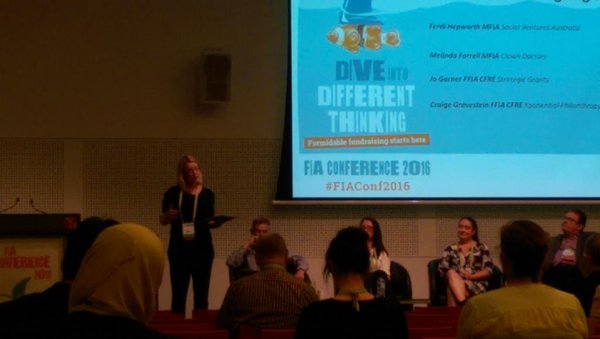From Session 5: Thursday 3 March

It’s not uncommon for us to hear from organisations that they don’t have evaluation methods in place and therefore not a lot of data to present in funding applications. Setting up an evaluation process, might be for example, something for which they are looking for a grant.
But then, when exploring their organisation’s work in more detail, they will start talking of examples: of a young girl in their local community, that none of the local youth organisations, or the school, or the Police, knew what to do with. She was never at school, her foster family were at wits end with how to help her, and other social services were unable to make a positive change when police called them in.
Enter the Youth Space, where the Youth Manager interviewed the young lady and set in place a holisitic model of intense support and care for her (which was via new piloted service deliver model for which they needed additional grant funding to continue). He involved her in the development of that care plan, exploring what it is that she is passionate about and how different activities could enable her to be comfortable talking to support workers and participate in productive activities in a positive way.
She started attending school again, police involvement became nil, her foster family reported back on her involvement in family activities and positive changes in her mood and behaviour. She was learning how to be happy and how she could contribute to society. She felt needed.
How is that for an impact!!! The Youth Space is not just a Service Delivery Provider, but a Change-Maker! That’s some pretty powerful key messaging right there!
This is from an organisation who says, they have no data. That is some of the richest qualitative data I have ever heard. On asking how many other such cases they had, “well, we’d need to go back and count the case files….” Yes –they do in fact have records. In fact the place is rich in data, both qualitative and quantitative, it is just not all collated in one central system.
The point is – that charities do need to be measuring performance – and EVERYONE in the organisation needs to understand this, most importantly, the people who are delivering the services, as they are often the ones also in charge of the data collection processes.
Performance measurement is essential for any business. NFPs are not excluded from this rule.
We have seen a massive shift in government funding reporting requirements from purely outputs around service deliverables, to outcomes reporting, which has always been the norm in the philanthropic space.
It is the aim of The Ian Potter Foundation, for example, that the projects that it funds will have long-term impact beyond immediate key performance indicators and outputs.
It is at the project planning point, that evaluation methodologies need to be built in and this is where we observe a lot of NFPs fall down.
Take the Perpetual Trustees application form for example. What do they want to know? How our organisation is being run and whether or not we have the capability and capacity to deliver the project and spend the grant funding, in the way we say we are going to.
It is surprising how many organisations struggle with providing really strong responses to the questions on that application, around how they are measuring organisational efficiencies and effectiveness, and how they are performing against those measures.
They are very transparent in stating that:
“Perpetual looks for evidence that non-profits are measuring and critiquing their own performance, and have a plan for advancing their particular cause that goes beyond attracting donations.”
Measuring performance is essential good business management. Any business should do it. NFPs are not excluded from this rule!
But I also believe that there are definitely different measurement methodologies that should be applied to different organisations, according to their size, what they do, and how they do it. And of course, you need to understand that the evaluation and performance management techniques that you employ, match the expectations of the donors that you are targeting in your overall Fundraising Strategy.
Philanthropist, Alan English for example, does not want a lengthy report that includes a detailed breakdown and complex evaluation report. He wants a video taken on your phone, of one of the children who has participated in the program for which he provided funding. He wants to hear from a couple of them what that program has meant for them. Then he wants the CEO or Program Manager to tell him how many other children had similar outcomes.
He knows enough about the areas he is investing in to translate the short-outcomes into long-term impact. And hence we are seeing a growing trend from family foundations in moving away from wanting documented reports, but wanting round table reporting.
Output, outcome and impact reporting can and should be scaled according to the size and reach of the organisation. Systemic changes can still take place from simply documenting case studies backing it up with quantitative data and supporting evidence base and disseminating results to the right organisations.
So if we want to build long-term, meaningful relationships with our major donors, which of course includes grant-makers, then we need to be measuring our performance, both at an organisational level and a project level. It not, how are they going to feel engaged in the change they are enabling?
In the words of Henry Ford: Coming together is the beginning; keeping together is progress; working together is success. It is critical to work together with our major donors, to create impact, and we must be able to measure and demonstrate that impact.
{loadposition blogsocialshare}

